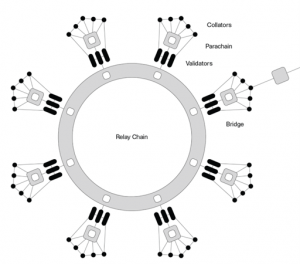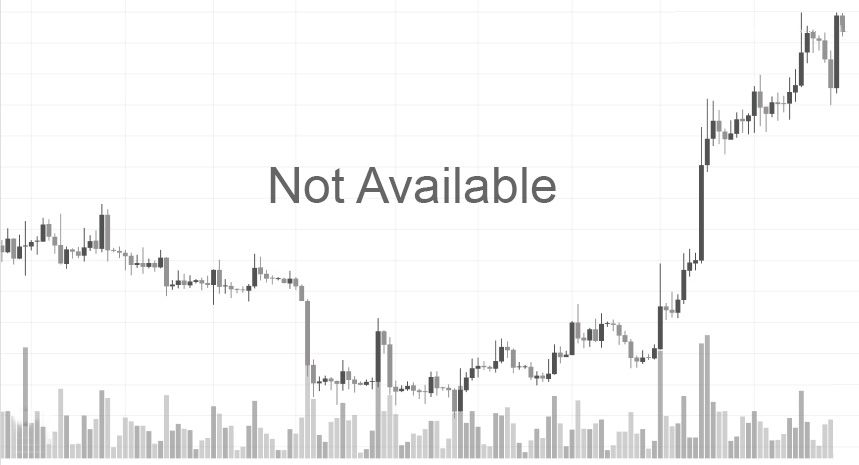The altcoin market remains one of the largest in the cryptocurrency ecosystem, with different projects and tokens championing diverse use cases and vibrant communities. Polkadot (DOT) stands out as one of the most prominent altcoins, with its blockchain protocol supporting cross-chain transactions.
The brains behind Polkadot created the protocol to address the interoperability issues relating to blockchains such as Bitcoin and Ethereum, whereby blockchains could not interact with one another. Polkadot was created, therefore, as a decentralized network for blockchains to interact through the transfer of data and asset types across chains and ecosystems.
So, what is DOT, and what should potential investors know about the Polkadot token? Our detailed guide highlights everything you need to know.
Polkadot price
Before answering the question, ‘what are Polkadots?’, let’s assess DOT’s performance in the market over time.
The Polkadot price as of March 2024 is about $11 per token. The current DOT price has surged by nearly 50% compared to its February 2024 price, partly due to the bullish trend in the broader crypto market as of early 2024, in anticipation of the April 2024 Bitcoin halving event.
DOT price history
A closer look at the Polkadot price history shows that the coin has continuously grown since it started trading:
- 2017: When DOT had its initial coin offering (ICO) in 2017, its price stabilized at around $0.29.
- 2020: Three years after its ICO, DOT was listed on major exchanges, and its price subsequently increased to around $5.
- 2021: The DOT price reached an all-time high of $53.34 in 2021, thanks to the year’s bull run and crypto boom.
- 2022: After a bearish market correction, the Polkadot price dropped to around $4.34 by December 2022.
- 2023: After the project announced the completion of Polkadot 1.0 in mid-2023, DOT recorded some gains to reach around $5.68 in July. However, as the broader bearish trend continued, its price dropped to a low point of $3.60 by October that same year.
Polkadot has grown by over 300% since its exchange launch and nearly 97% compared to March 2023. Although the DOT price is still significantly below its 2021 all-time high, with bullish sentiment in the broader crypto market in Q1 2024, many investors believe it could increase throughout the year.
Factors influencing Polkadot’s price
Bullish market sentiment, especially as Bitcoin continues to gain traction after it reached a new all-time high, crossing the $70,000 zone in Q1 2024, is a major reason for a surge in DOT’s price. At the same time, Polkadot is among the top-ranking altcoins by market cap, proving popularity even in bear markets.
Beyond the positive market sentiment, developments in the Polkadot ecosystem remain significant price influencers. According to analyst Cris Pap, Polkadot’s usage is increasing among developers because of its launch of Snowbridge, which supports fast transactions between Polkadot and other blockchains.
Developers continue to create different projects, including Polkadot NFTs (Dot Ordinals). As more DeFi protocols switch to the network, the increased interest among developers, investors and potential brand partners causes a bullish sentiment. If you are curious about where we see Polkadot heading towards in the near future, you can find our thoughts in Polkadot price prediction guide.
What is Polkadot?

Polkadot is known for its DOT token, which can be traded on cryptocurrency exchanges, but it is more than just a tradable asset. Polkadot is a decentralized blockchain protocol built to connect with third-party blockchains, in order to share data and execute transactions.
What makes Polkadot unique is its ability to interoperate with other networks outside its primary ecosystem. For instance, the network connects to external blockchains such as Bitcoin, Ethereum and Kusama without an intermediary. This makes its transactions speedy and its network scalable for developers to thrive.
DOT powers the Polkadot ecosystem. It serves as the governance token for community members to determine the protocol’s future. It can also be staked for passive income.
How does Polkadot work?
As stated, Polkadot uses a multi-chain framework that different blockchains leverage for communication and transaction processing.
Relay chain and parachains
To achieve this, the Polkadot network has two blockchains: the primary blockchain, called the relay chain, and many secondary blockchains, called parachains.
The parachains are created by users for cross-chain interoperability and are different in design, token economy and functionality. Due to their strength and number, parachains quickly transfer data to the relay chain, increasing the network’s scalability to process up to 1,000 transactions per second.
The connecting layer (also known as the bridge) transfers data and value between Polkadot and its connected blockchains.
Nominated proof-of-stake consensus mechanism
Polkadot validates transactions using a nominated proof-of-stake (NPoS) consensus mechanism. Like all PoS networks, validators stake DOT on the network to secure the relay chain and verify transactions on the parachains. However, Polkadot also uses nominators who stake DOT tokens to support trustworthy validators and boost the network’s security.
Besides its primary use case of connecting external blockchains and facilitating seamless data and value transfer, the network is crucial to the DeFi world by supporting different DeFi applications and blockchain projects.
It also thrives in the gaming and non-fungible token (NFT) space, as developers can create decentralized games and digital collectibles leveraging the network’s interoperability.
Who created Polkadot?
Polkadot’s creators are notable figures in the blockchain industry. They include Ethereum co-founder and former CTO Gavin Wood, Peter Czaban and Robert Habermeier. The trio founded the Web3 Foundation, a Swiss non-profit research foundation, in 2017, with Polkadot as its flagship project.
Wood released the Polkadot whitepaper in 2016, and the crypto project went live in 2020.
Polkadot market performance
As of March 2024, Polkadot has a market capitalization of over $14bn, ranking among the top 12 cryptocurrencies by market cap, according to CoinMarketCap data.
In other words, Polkadot is among the top-rated and most-traded cryptocurrencies. However, its market cap and trading volume are below those of competitors such as Cardano and Solana, which have similar use cases and operate using the PoS consensus mechanism.
Cardano’s market cap at press time stands at over $27bn, while Solana’s market cap is nearly $68bn. Nonetheless, DOT’s distinct use case sets it apart from others.
How to buy and store Polkadot
Polkadot is live on numerous centralized and decentralized exchanges, making it accessible to investors who are interested in buying DOT. You can buy DOT using the steps below:
- Step 1: Choose a reputable exchange and create a trading account.
- Step 2: Complete identity verification (KYC) if required.
- Step 3: Deposit funds using the supported payment methods.
- Step 4: Search for DOT and buy the desired quantity on the trading platform.
- Step 5: Transfer the DOT tokens to a self-custodial wallet.
Transferring your coins to an external crypto wallet is a proactive security approach to hedge against potential losses if your exchange gets compromised. You can find popular hardware/cold wallets such as Trezor and Ledger or opt for software/hot wallets such as MetaMask and Trust Wallet.
The future of Polkadot
According to its project roadmap, Polkadot aims to process between 100,000 and 1,000,000 transactions per second in the future. This should happen after a successful asynchronous backing system, which will optimize the network’s capacity.
The project developers also intend to launch Parathreads to create pay-as-you-go parachains and simplify smart contracts, making the protocol more scalable. You can read more about Polkadot’s proposed project developments for a better understanding of its roadmap.
Regarding Polkadot price predictions, market analysts believe that DOT’s value will reach $16 later in 2024 and rise to about $44 by 2025. The predicted rise in the coin’s value is expected to align with further developments within the Polkadot ecosystem and favorable market cycles relating to significant events such as the Bitcoin halving and institutional inflows into the crypto market.
Risks and challenges
Like other cryptocurrencies, one of the significant risks of investing in DOT is the lack of regulatory clarity. With unclear crypto regulations in most regions, including the US, investors should consider how potential regulatory changes or new legislation may impact DOT’s price.
Technological vulnerabilities also make Polkadot risky for investors. Despite striving to solve scalability issues with its innovative designs, technological issues such as security breaches and network disruptions due to overload may negatively impact DOT’s value.
Finally, the crypto market is volatile. So, while investing in DOT can be an attractive consideration, especially during bullish market cycles, sharp and fast price movement is a significant risk. Investors should consider diversifying their portfolios and mapping out an effective risk-management strategy to mitigate against this risk.
Regulatory and legal aspects of Polkadot
As is true for the wider cryptocurrency market, lack of regulatory clarity remains a challenge for Polkadot. The US Securities and Exchange Commission considers the coin a security, and not a cryptoasset, because it offers staking and yield possibilities. Although the Web3 Foundation stated that the coin’s status has changed from a security to a software, the SEC’s position still stands.
Generally, the broader crypto market’s regulatory framework varies across different countries, impacting investors’ sentiment and interest in cryptocurrencies such as DOT. However, with the SEC’s 2023 approval of the spot Bitcoin exchange-traded funds (ETFs) and a potential spot Ethereum ETF in 2024, some analysts believe we could see a positive change in the crypto market’s retail and institutional interests.
Community and ecosystem
The Polkadot and Kusama ecosystem drives the crypto project. Community members who hold DOT tokens can participate in governance and unanimously decide the next steps of the Polkadot project.
However, a governance overhaul called Governance V2 will happen as the project develops. The next-generation governance model will make the ecosystem’s decision-making process more decentralized by eliminating the existing council and technical committees.
Instead, it will launch the Polkadot Fellowship so that community referendums decide every future decision. Further decentralization of the Polkadot project and community will make it more user-focused, community-driven, and attractive to developers and investors.
Comparing Polkadot to other cryptocurrencies
How does Polkadot compare to competitor blockchains, such as Polygon, Ethereum and Cardano?
Polkadot vs Polygon
Polkadot and Polygon were created to solve scalability issues and boost transaction speed. Both blockchains also operate using the PoS consensus mechanism. However, while Polygon processes up to 72,000 transactions per second, Polkadot can process up to 100,000.
Also, DOT has a larger market value of about $11 per token at the time of writing, while MATIC is valued at a little over $1 per token.
Polkadot vs Cardano
The Cardano and Polkadot blockchains operate using the PoS consensus model and are famous for fast transaction speeds. However, the DOT ecosystem is more community-driven and developer-friendly.
On the other hand, Cardano has a more extensive blockchain infrastructure. Moreover, at over $26bn, its market cap is nearly double that of Polkadot.
Polkadot vs Ethereum
Having switched to PoS, Ethereum functions similarly to Polkadot. Both networks process transactions using smart contracts and validators, but Polkadot uses fewer validators per round, making its transaction speed faster. The blockchain processes up to 100,000 transactions per second compared to Ethereum’s 30.
Conversely, Ethereum is the largest altcoin and has a larger developer ecosystem. ETH also trades at a higher price per token than DOT.
FAQs
How much is 1 Polkadot worth?
As of March 2024, a Polkadot token is worth about $11. Investors need not purchase entire units though, as most exchanges allow for fractional purchases.
Is Polkadot actually safe?
With a 280% increase between its exchange listing in 2020 and the press time (March 2024), DOT has been a profitable investment. However, future price changes may occur due to volatility and impact the coin’s value.
What does Polkadot do?
Polkadot enables multiple blockchains to connect and communicate through its protocol. It also facilitates fast transactions at a speed of up to 100,000 transactions per second.
